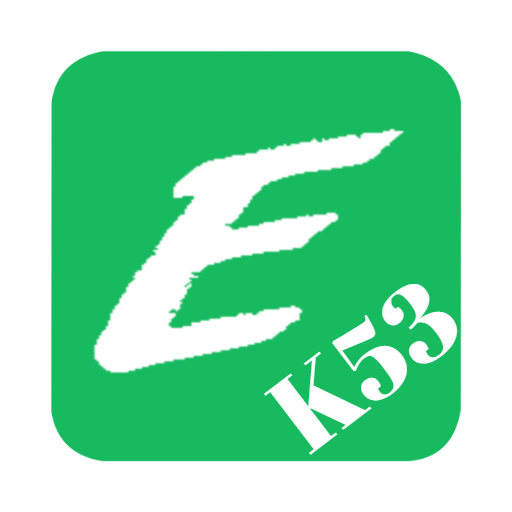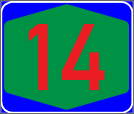Table of Contents
K53 Road Surface Markings

In this blog post, we will delve into the significance of K53 road surface markings, their meanings, and how they impact your driving experience. When you’re driving, the road itself communicates with you through a language of its own. Road surface markings, those painted signs on the road, play a crucial role in conveying important messages and guiding drivers on their journey. These markings can be classified into three categories: Regulatory, Warning, and Information. So, let’s paint a clearer picture of road surface markings and their role on the asphalt canvas!
The Meaning Behind K53 Road Surface Markings:
1.) Regulatory K53 Road Markings:
Just like traditional traffic signs, regulatory markings on the road surface inform drivers of specific rules and regulations they must follow. These markings include stop lines, yield lines, crosswalks, and bus lanes. Drivers should treat these markings with the same importance as their sign counterparts and adhere to the instructions they convey. Regulatory markings are typically painted in white.

2.) K53 Warning Road Markings:
Warning markings are designed to alert drivers to potential hazards or upcoming changes in road conditions. These markings include arrows, chevrons, or symbols indicating lane merges, lane shifts, or pedestrian crossings. Drivers should be vigilant when encountering warning markings and adjust their driving behavior accordingly. Warning markings are typically painted in yellow.
3.) Information K53 Road Markings:
Information markings provide drivers with useful information about the road ahead. They can indicate lane usage, directional arrows, or parking restrictions. Information markings assist drivers in making informed decisions and navigating complex road situations. These markings are typically painted in white.
Understanding the Colors of K53 Road Markings:
1.) White Markings:
White road surface markings convey general information and regulatory instructions. They can indicate lane divisions, traffic flow directions, or delineate parking areas. It’s important to note that crossing a solid white line is generally not permitted, except for those lines that cross the width of the road.
2.) Yellow Markings:
Yellow road surface markings are primarily used for warning purposes. They draw attention to potential hazards, lane shifts, or pedestrian crossings. Drivers should exercise caution when encountering yellow markings and adjust their speed and position accordingly.

3.) Red Markings:
Red road surface markings are typically used for specific regulatory purposes. They indicate no-stopping zones or restricted areas where parking is strictly prohibited. It’s important to respect red markings and refrain from stopping or parking in these designated areas.
Adhering to K53 Road Surface Markings:
1.) Follow the Signs:
Road surface markings carry the same weight as their sign counterparts. Drivers should react to road surface markings as they would to mounted signs, following the instructions provided.
2.) Safety First:
Road surface markings serve as crucial safety measures. By adhering to these markings, drivers contribute to a safer road environment for themselves and others.

3.) Know the Exceptions:
It’s essential to familiarize yourself with local traffic laws and regulations regarding road surface markings. Different regions may have specific rules or exceptions that drivers need to be aware of.
The Language of the Road
Road surface markings communicate valuable information to drivers, guiding them through their journey and ensuring a safer and more efficient driving experience. By understanding the meanings and colors of these markings, drivers can make informed decisions, adapt their driving behavior, and navigate the road with confidence. So, let the road surface markings be your guide as you navigate the asphalt canvas, and remember, safety always comes first!
Note: While this blog post provides general information about road surface markings, it’s important to note that specific regulations and guidelines may vary depending on your region. Always refer to local traffic laws and authorities for precise details related to road surface markings in your area.
Download our K53 Learners Licence App on Google Play Store by clicking here.
Do you know that most of the jobs require you to have a Drivers licence? This is a free learners licence website to help you study and pass your K53 learners’ licence test! Click here to start now or you can download our K53 Learners Licence App on Google Play Store by clicking here.
K53 Route Markers – Pass Your Learners Licence in South Africa
K53 Guidance Signs: Pass Your Learners Licence in South Africa
K53 Location signs: Pass Your Learners Licence in South Africa
K53 Local Direction Signs: Pass Your Learners Licence in South Africa
K53 Diagrammatic Signs: Pass Your Learners Licence in South Africa
Free K53 Study Materials
Expert K53 Tips and Strategies for Acing the K53 Test – Absolutely Free!
Join Our K53 Community – Supportive and Free!
Learn K53 for Free – Master the Rules of the Road!
Comprehensive K53 Study Materials for the K53 Test – All Free!
Understanding the Scoring Method in the K53 Driving Licence TestMastering K53 Time Limits: A Key to Success in the K53 Driving Licence Test





